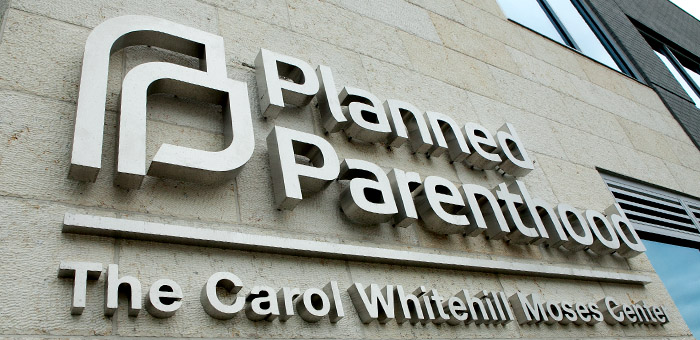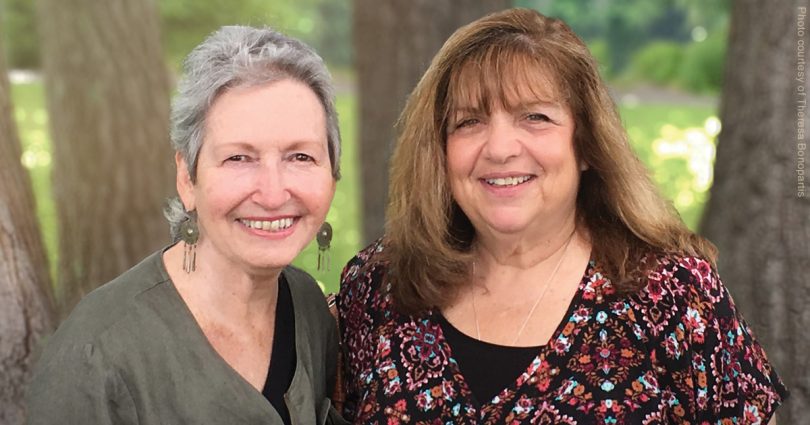By Jim Sedlak
As I described in the first two articles of this series, when Planned Parenthood celebrated its 50th anniversary in 1966 it had overcome three of its four major initial problems. Contraception had been accepted by most major churches; sexual information was being sent freely in the mail; and the manufacture, sale, and distribution of contraceptive products was legalized across the United States.
The only major problem left to solve was the acceptance and decriminalization of abortion.
Unbeknownst to most Americans, Planned Parenthood was well on its way to achieving that goal. In 1955, Planned Parenthood had convened a national conference on abortion. The purpose of the conference was to ascertain where abortion stood in the United States and to discuss how it could be decriminalized. It was not just a one-time, one-place gathering, but a series of meetings and discussions in which Planned Parenthood Federation of America’s medical director, Dr. Mary Calderone, played an important part. The results of these activities needed to be kept out of the view of the general public as long as contraception was illegal.
Once the Supreme Court handed down the Griswold decision in 1965, the gloves came off. Planned Parenthood and other abortion advocates were free to openly advocate for changes in the abortion laws. The first state to accomplish the liberalization of its abortion laws was Colorado. State representative Richard “Dick” Lamm wrote the new law and got it passed in 1967—just two years after Griswold. It is worthy to note that Lamm was highly influenced by his mother, Mary Lamm, a Planned Parenthood supporter. In an interview with ToGovern.com, Lamm stated: “My mother would drive around with two Planned Parenthood stickers on the back of her car. . . . My mother was a very smart lady and she was really concerned about population and the environment and I was very much influenced by her feeling that the growth of population was not sustainable.”
From that beginning in Colorado, abortion laws were liberalized in a growing number of states. New York decriminalized abortion on July 1, 1970, and Planned Parenthood did its first legal abortion on July 2, 1970, in Syracuse. At that time, Alan Guttmacher, MD, was president of Planned Parenthood. In 1973, the Supreme Court handed down the Roe and Doe decisions which, the court said, was based in part on the fictitious “right to privacy in sexual matters” it found in its Griswold decision—brought by Planned Parenthood. Reporters went to Guttmacher after the decision and asked how he planned to protect that decision. Guttmacher told the Washington Star newspaper: “How can the Supreme Court decision be absolutely secured? The answer to winning the battle for elective abortion once and for all is sex education.”
By the time Faye Wattleton took over in the top spot in 1976, Planned Parenthood was doing 70,000 abortions a year. When she left in 1992, the death toll at PP rose to 130,844 annually. Her successor, Pamela Maraldo (1993-1995) placed her emphasis on healthcare, not abortion, and the annual number reached only 139,899 before PP got rid of her.
Having clearly gotten the message, Maraldo’s replacement, Gloria Feldt, took over in 1996 and quickly became the abortion queen at Planned Parenthood. At a time when abortions in the United States fell from 1.36 million in 1995 to 1.24 million in 2005, Feldt doubled Planned Parenthood’s abortion business from 139,899 to 289,750 in 2006 as she gave way to a new president. Feldt’s term saw the most dramatic increase in abortions in the history of Planned Parenthood.
In the last couple of years of Feldt’s reign, Planned Parenthood decided to put its emphasis on political power. It replaced Feldt, who had come up through the ranks of Planned Parenthood clinic positions, with Cecile Richards, a political operative who had no healthcare experience. Richards has been exceptional at tying Planned Parenthood into the taxpayer money flow. According to numbers in its annual reports, it has gone from receiving $272.7 million in 1995 (the year before Richards’ arrival) to $553.7 last year (a record high). The result is that PP has become much more dependent on taxpayer money. Where taxpayer funds used to account for one-third of PP’s income, it is now responsible for two-fifths—leaving Planned Parenthood vulnerable in the event a hostile Congress and administration are elected by the American people.
As equally alarming to Planned Parenthood is its lethargic abortion business. Although that business has gone from 289,750 the year Richards took over to 323,999 last year, the truth is that all of that gain occurred in the first three years of Richards’ presence and may have been a leftover from Feldt’s work. Since 2009, annual abortions have dropped at PP from 331,796 to 323,999. I’m sure some at PP argue that this is a small decline compared with an overall drop in abortions in the United States from 1.24 million in 2006 to 1.05 million today. Others, I’m sure, are pointing out that, when Gloria Feldt faced a national drop of 120,000 abortions a year, she more than doubled PP’s abortion numbers. Under Cecile, a drop of 190,000 a year nationally has resulted in PP losing the income from 8,000 abortions a year. The number crunchers at Planned Parenthood cannot be happy.
So, as Planned Parenthood enters its 100th anniversary year, it is an organization under fire and in trouble. It has tried many things during Richards’ reign to bolster its abortion work. It created mega-abortion clinics and is implementing its Planned Parenthood Experience to beautify its facilities. These have not worked. Last year it began to really put all its eggs into medication (abortion pill) abortions, adding this killing method to 25 of its centers just in 2015. It appears desperate to revive its abortion business.
Planned Parenthood is also returning to its roots by avidly pushing for sexuality education programs in the schools. It led the charge to create National Sexuality Education Standards and is now pushing these standards and specific programs in schools across the country—particularly in middle schools. It wants to create a renewed demand for abortions among young people who, according to most polls, are rejecting abortion as the “final solution” to a surprise pregnancy.
Today, Planned Parenthood has a growing opposition. There have always been people in history who have had the vision and fortitude to oppose Planned Parenthood. I think of Monsignor John Ryan in the 1920s–1940s. As the pro-life movement became very active after the Roe decision, there was a number of groups fighting Planned Parenthood (including American Life League, Human Life International, STOPP, National Right to Life, Christian Action Council, Life Decisions International, and others). But, today, the ranks of those fighting Planned Parenthood have swelled beyond belief. I think of Live Action, Center for Medical Progress, 40 Days for Life, and many, many more. The “racketeers” at Pro-Life Action League and Operation Rescue inspire us all to even greater heights. The list of courageous politicians and clergy who are taking on PP is awesome. The recent creation of ALL’s Culture of Life Studies Program will instill such a respect for the dignity of every human being in the fabric of our young people that Planned Parenthood will simply not have a chance to lead the current generation astray.
There is a lot of hard work ahead of us, but the future looks promising. Planned Parenthood systematically climbed its way to the top of the abortion industry in the last 50 years, but it is now poised for a shattering fall.
Jim Sedlak is executive director of American Life League and founder of STOPP International. He is a recognized expert on all things Planned Parenthood.



